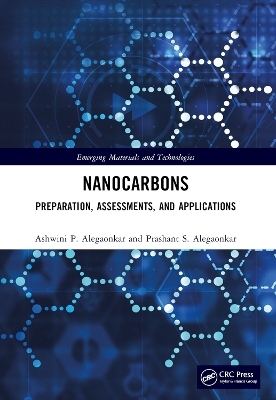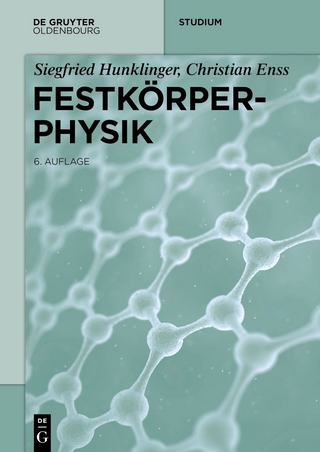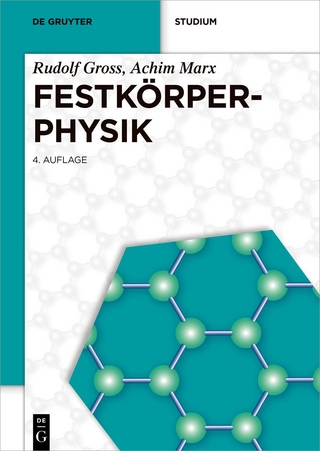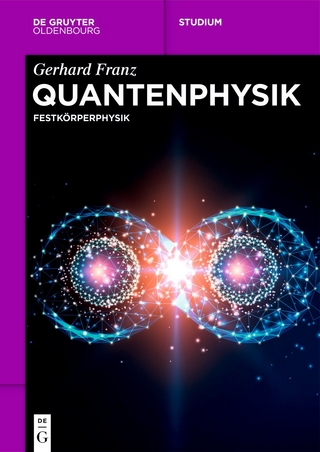
Nanocarbons
CRC Press (Verlag)
978-1-032-32901-7 (ISBN)
This book provides a practical platform to the readers for facile preparation of various forms of carbon in its nano-format, investigates their structure–property relationship, and finally, realizes them for a variety of applications taking the route of application engineering. It covers the preparation and evaluation of nanocarbons, variety of carbon nanotubes, graphene, graphite, additively manufactured 3D carbon fibres, their properties, and various factors associated with them. A summary and outlook of the nanocarbon field is included in the appendices.
Features:
Presents comprehensive information on nanocarbon synthesis and properties and some specific applications
Covers the growth of carbon nanoparticles, nanotubes, ribbons, graphene, graphene derivatives, porous/spongy phases, graphite, and 3D carbon fabrics
Documents a large variety of characterizations and evaluations on the nature of growth causing effect on structure properties
Contains dedicated chapters on miniaturized, flat, and 2D devices
Discusses a variety of applications from military to public domains, including prevalent topics related to carbon.
This book is aimed at researchers and graduate students in materials science and materials engineering, and physics.
Dr. Ashwini P. Alegaonkar is working in the areas of Materials Chemistry. She has obtained her M. Phil. degree in the year 2014 and Ph.D. degree in Chemistry in 2019 from Department of Chemistry, SP Pune University. Her area of research includes spin transport and magnetic correlations in nano-carbon systems, adatom doping in graphene, graphene derivatives, and 2D heterojunctions for energy storage and device applications. She has number of papers in the journals of international repute, and book chapters. Dr. Prashant S. Alegaonkar is working in the areas of Applied Physics. He obtained his Ph.D. from Department of Physics, SP Pune University in 2004, and postdoc from SAINT, SKKU, Korea in 2008. He served as the faculty of Physics in College of Engineering Pune (CoEP), Assistant Professor in Defence Institute of Advanced Technology, Pune and currently working as Associate Professor in Physics in Central University of Punjab at Bathinda. His research interest includes CVD synthesis and super–growth of carbon nanotubes, graphene, reduced graphene, graphene oxide for targeted applications of military and civil origin. He has more than 150 international papers, 75+ conference proceedings, 2100+ Google scholar citations with h- and i-10 index, respectively, 25 and 45.
1. Introduction and survey. 1.1. Status of carbon.1.2. Scope of nano-carbons . References. 2. Preparation and evaluation of nano-carbons. 2.1. 0-D carbon systems: carbon nanoparticles (CNP) /spheres (CNS). 2.2. Carbon nanotubes: 1-D format of carbon. 2.3. 2D graphene. 2.4. Foundry processed 3D graphite: variable density effect. 2.5. 4D orthogonal carbon fabric. References. 3. Hydrodynamics and shock absorption properties of nano-carbon . 3.1. Explosion: Background. 3.2. Laboratory synthesis: the survey. 3.3. Experimental simulation of blast: the instrumentation. 3.4. GNF for shock absorbing application. 3.5. Surface interactions of transonic shock wave with GLNR. 3.6. Hydrodynamics response of nanocarbons: CNS vs GNF. 3.7. Blast mitigation parameters for PNCs. References. 4. Microwave scattering and radar absorption coating properties of nanocarbon. 4.1. Radar know-hows: the background. 4.2. Microwave scattering mechanism: the Maxwellian formulation. 4.3. Shielding performance of materials architected . 4.4. Graphene and graphene derivatives for shielding. References. 5. Heat transfer and thermodynamics in micro graphitic nozzles. 5.1. Thermo-physical assessments of variable density graphite. 5.2. High temperature thermodynamics in rocket motor nozzles. References. 6. Electrochemistry and energy storage devices made up of carbon nano particles. 6.1. High performance tellurium-reduced graphene oxide pseudo-capacitor. 6.2. Fabrication of flexible and durable supercell made up of carbon-nano-sphere. 6.3. Self-assembled two-dimensional heterostructure of rGO/MoS2/h-BN (GMH). References. 7. Magnetism in otherwise non-magnetic nano-carbon and its derivatives. 7.1. Spin transport and magnetic correlation in GNCs doped with nitrogen. 7.2. Spin dynamics in GNCs vs graphene: role of adatom. 7.3. Molecular-spintronics in 2D carbon with adatom. 7.4. Tetrakis(dimethylamino) ethylene induced magnetism . References. 8. Multi-functional nano-carbons: from meta-materials to non-liner optics and gas sensing to mechanically tough fibre mat application. 8.1. Multi-functional aspect: optical gas sensing and EMI shielding. 8.2. Split ring resonators: Ferro-nano-carbon metamaterials. 8.3. Mechanical properties of GNCs nano-composites. 8.4 . Mechanical properties of electrospun PVA/CNT composite nanofibers. References. 9. Application engineering of nano-carbon-reinforced composites. 9.1 Field electron emission aspects of CNTs: the paste approach. 9.2. TiO2 coated CNTs: dye sensitized solar cells. 9.3. CNT embedded nylon nanofiber bundles by electrospinning. References. 10. Poly-nano-carbons: ion-track membranes for devices and nuclear radiation induced modifications for opto-electronics . 10.1. Emergence of nano-ion track membrane for flat flexible devices. 10.2. Opto-electronic properties of radiation induced modified poly-carbon. References. 11. Summary and outlook
| Erscheinungsdatum | 20.02.2023 |
|---|---|
| Reihe/Serie | Emerging Materials and Technologies |
| Zusatzinfo | 39 Tables, black and white; 141 Line drawings, black and white; 89 Halftones, black and white; 230 Illustrations, black and white |
| Verlagsort | London |
| Sprache | englisch |
| Maße | 178 x 254 mm |
| Gewicht | 666 g |
| Themenwelt | Naturwissenschaften ► Physik / Astronomie ► Festkörperphysik |
| Technik ► Maschinenbau | |
| ISBN-10 | 1-032-32901-7 / 1032329017 |
| ISBN-13 | 978-1-032-32901-7 / 9781032329017 |
| Zustand | Neuware |
| Informationen gemäß Produktsicherheitsverordnung (GPSR) | |
| Haben Sie eine Frage zum Produkt? |
aus dem Bereich


